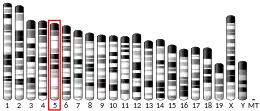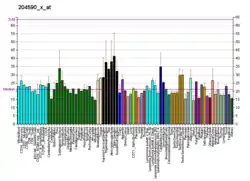| VPS33A | |||||||||||||||||||||||||||||||||||||||||||||||||||
|---|---|---|---|---|---|---|---|---|---|---|---|---|---|---|---|---|---|---|---|---|---|---|---|---|---|---|---|---|---|---|---|---|---|---|---|---|---|---|---|---|---|---|---|---|---|---|---|---|---|---|---|
| |||||||||||||||||||||||||||||||||||||||||||||||||||
| Identifiers | |||||||||||||||||||||||||||||||||||||||||||||||||||
| Aliases | VPS33A, CORVET/HOPS core subunit | ||||||||||||||||||||||||||||||||||||||||||||||||||
| External IDs | OMIM: 610034 MGI: 1924823 HomoloGene: 11294 GeneCards: VPS33A | ||||||||||||||||||||||||||||||||||||||||||||||||||
| |||||||||||||||||||||||||||||||||||||||||||||||||||
| |||||||||||||||||||||||||||||||||||||||||||||||||||
| |||||||||||||||||||||||||||||||||||||||||||||||||||
| |||||||||||||||||||||||||||||||||||||||||||||||||||
| Wikidata | |||||||||||||||||||||||||||||||||||||||||||||||||||
| |||||||||||||||||||||||||||||||||||||||||||||||||||
Vacuolar protein sorting-associated protein 33A is a protein that in humans is encoded by the VPS33A gene.[4][5]
Function
Vesicle mediated protein sorting plays an important role in segregation of intracellular molecules into distinct organelles. Genetic studies in yeast have identified more than 40 vacuolar protein sorting (VPS) genes involved in vesicle transport to vacuoles. This gene is a member of the Sec-1 domain family, and it encodes a protein similar to the yeast class C Vps33 protein. The mammalian class C VPS proteins are predominantly associated with late endosomes/lysosomes, and like their yeast counterparts, may mediate vesicle trafficking steps in the endosome/lysosome pathway.[5]
Interactions
Clinical
A syndrome has been described that appears to be associated with mutations in this gene.[7] This syndrome has since been named Mucopolysaccharidosis-plus syndrome.[8]
References
- 1 2 3 GRCm38: Ensembl release 89: ENSMUSG00000029434 - Ensembl, May 2017
- ↑ "Human PubMed Reference:". National Center for Biotechnology Information, U.S. National Library of Medicine.
- ↑ "Mouse PubMed Reference:". National Center for Biotechnology Information, U.S. National Library of Medicine.
- ↑ Huizing M, Didier A, Walenta J, Anikster Y, Gahl WA, Krämer H (March 2001). "Molecular cloning and characterization of human VPS18, VPS 11, VPS16, and VPS33". Gene. 264 (2): 241–7. doi:10.1016/S0378-1119(01)00333-X. PMID 11250079.
- 1 2 "Entrez Gene: VPS33A vacuolar protein sorting 33 homolog A (S. cerevisiae)".
- ↑ Kim BY, Krämer H, Yamamoto A, Kominami E, Kohsaka S, Akazawa C (August 2001). "Molecular characterization of mammalian homologues of class C Vps proteins that interact with syntaxin-7". J. Biol. Chem. 276 (31): 29393–402. doi:10.1074/jbc.M101778200. PMID 11382755.
- ↑ Dursun A, Yalnizoglu D, Gerdan OF, Yucel-Yilmaz D, Sagiroglu MS, Yuksel B, Gucer S, Sivri S, Ozgul RK (2016) A probable new syndrome with the storage disease phenotype caused by the VPS33A gene mutation. Clin Dysmorphol
- ↑ Vasilev F, Sukhomyasova A, Otomo T (2020) Mucopolysaccharidosis-plus syndrome. Int J Mol Sci 21(2)
Further reading
- Pevsner J, Hsu SC, Hyde PS, Scheller RH (1997). "Mammalian homologues of yeast vacuolar protein sorting (vps) genes implicated in Golgi-to-lysosome trafficking". Gene. 183 (1–2): 7–14. doi:10.1016/S0378-1119(96)00367-8. PMID 8996080.
- Kim BY, Krämer H, Yamamoto A, Kominami E, Kohsaka S, Akazawa C (2001). "Molecular characterization of mammalian homologues of class C Vps proteins that interact with syntaxin-7". J. Biol. Chem. 276 (31): 29393–402. doi:10.1074/jbc.M101778200. PMID 11382755.
- Suzuki T, Oiso N, Gautam R, Novak EK, Panthier JJ, Suprabha PG, Vida T, Swank RT, Spritz RA (2003). "The mouse organellar biogenesis mutant buff results from a mutation in Vps33a, a homologue of yeast vps33 and Drosophila carnation". Proc. Natl. Acad. Sci. U.S.A. 100 (3): 1146–50. Bibcode:2003PNAS..100.1146S. doi:10.1073/pnas.0237292100. PMC 298741. PMID 12538872.
- Suzuki Y, Yamashita R, Shirota M, Sakakibara Y, Chiba J, Mizushima-Sugano J, Nakai K, Sugano S (2004). "Sequence comparison of human and mouse genes reveals a homologous block structure in the promoter regions". Genome Res. 14 (9): 1711–8. doi:10.1101/gr.2435604. PMC 515316. PMID 15342556.
- Gissen P, Johnson CA, Gentle D, Hurst LD, Doherty AJ, O'Kane CJ, Kelly DA, Maher ER (2005). "Comparative evolutionary analysis of VPS33 homologues: genetic and functional insights". Hum. Mol. Genet. 14 (10): 1261–70. doi:10.1093/hmg/ddi137. PMID 15790593.


